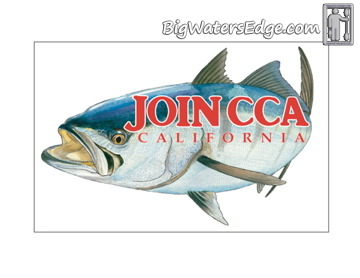|
Bob Fletcher's Letter
Here is the op-ed letter written by Bob Fletcher...
SETTING THE RECORD STRAIGHT ON FISH HATCHERY’S SUCCESS
ROBERT C. FLETCHER
VoiceofSanDiego’s recent “news story” about the Ocean Resources Enhancement and Hatchery Program, (OREHP) and its state-contracted operator, Hubbs-SeaWorld Research Institute (Hubbs) was mind-boggling in its misrepresentations. A piece that far off target is obviously intended only to create a bad impression and a classic example of, “My mind’s made up, so don’t confuse me with facts.”
As someone who has spent his whole life in the marine fisheries arena, and is intimately familiar with the hatchery program and with Hubbs, I need to offer a far more reasoned perspective on a valuable and innovative scientific stock enhancement program
Let’s start with a few facts. OREHP is one of the nation’s largest marine fish enhancement research programs, launched in 1983, thanks to state legislation authored by then- Assemblymember Larry Stirling, as well as private donations. In 1984, the OREHP Advisory Panel identified white seabass – a severely depleted species in Southern California waters – as a target for assessing the feasibility of long-term replenishment. From the get-go, the California Department of Fish and Wildlife (formerly Fish and Game) has contracted with Hubbs to operate the program, including producing the fish.
Wild white seabass broodstock – caught and donated by recreational anglers – provide the eggs that are hatched at the hatchery. From there, the young fish are tagged before being taken to grow-out net pens built in coastal waters and maintained by volunteers. When the fish reach eight inches in length, they are released into the wild, to help build the wild population.
OREHP has a 32-year track record. Hubbs’ contract has been renewed annually without fail. Nearly 100 percent of the funding program comes from the recreational anglers who asked to be taxed to fund the program! Facts are stubborn things, and those are the facts.
Now a strong opinion, from someone who also spent 15 years on the Pacific Fishery Management Council. OREHP has been of huge benefit to the white seabass stocks off the coast of Southern California, even at its modest, experimental scale of production.
The white seabass fishery had been devastated by early use of commercial purse seine nets, as well as the loss of in-shore bays and estuaries critical for nursery habitat. From the 1950s to the 1980s, annual party boat catches of white seabass in California dropped from 55,000 to less than 3,500.
Today, white seabass from OREHP have survived as long as 15 years in the wild and been caught as far as 340 miles from their original release site. All the recreational anglers I know believe OREHP has been of great benefit and has clearly helped jump-start the replenishment of the wild population.
Hubbs has shared its results in scientific and other forums, in peer-reviewed journals, in detailed public-document reports and in countless presentations. Hubbs created the “White Seabass in the Classroom” program to familiarize children with the environmental importance of our ocean resources. And Hubbs is consulting with state of Florida on a hatchery program modeled after OREHP.
Hubbs is world-renowned for the quality and integrity of its marine science for many reasons. That is why I find it so disturbing to see its work and intentions questioned.
Let me briefly address two of the skeptics’ issues.
Fish, like any animal (and plant) species, have wide variability. In humans, we see tall people, short people, people with noses of various sizes, with differently colored hair and skin ... and varying degrees of health. Is natural variation the same as deformity? Of course not!
Yes, some of the white seabass will not be robust enough to grow to full size in the wild. When that happens in wild populations, they become food (prey). When that happens in OREHP, if it seems severe, they are “culled.” Not just individuals, but potentially an entire group of fish.
The so-called news story also criticized Hubbs for euthanizing populations of fish that appeared to suffer from disease or other defects. Now that’s just damned if you do and damned if you don’t – releasing these fish is bad, but so is culling them? You cannot have it both ways.
Hubbs’ intent is to breed populations of white seabass that closely reflect the wild populations, to ensure they are as healthy as possible and to get them in to the wild to rebuild the stocks.
Is it perfect in every regard? What human endeavor is?
Is this grand experiment making a difference? Absolutely! And that is what people need to know!
Fletcher is former Chief Deputy Director of the California Department of Fish and Game (now Fish and Wildlife), retired President of the Sportfishing Association of California (a post he held for 20 years), a former U.S. commissioner on the Inter-American Tropical Tuna Commission and a Board member of Hubbs-SeaWorld Research Institute.
__________________
Jim / Saba Slayer

|